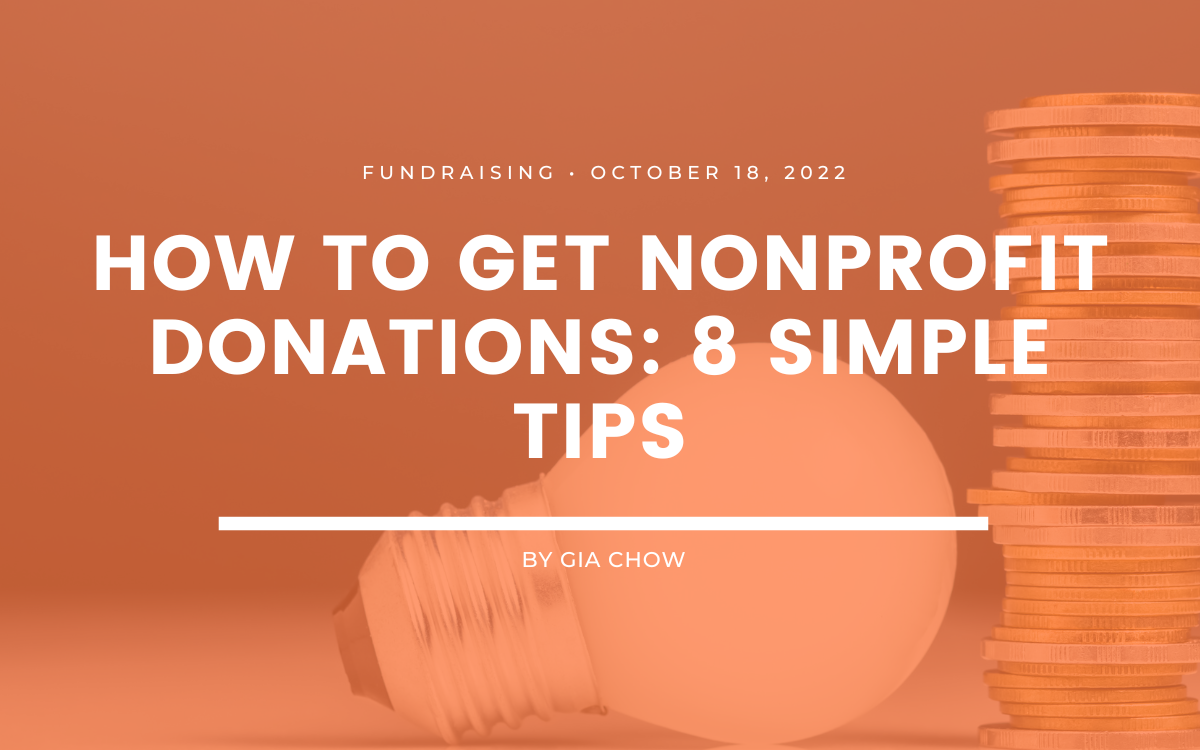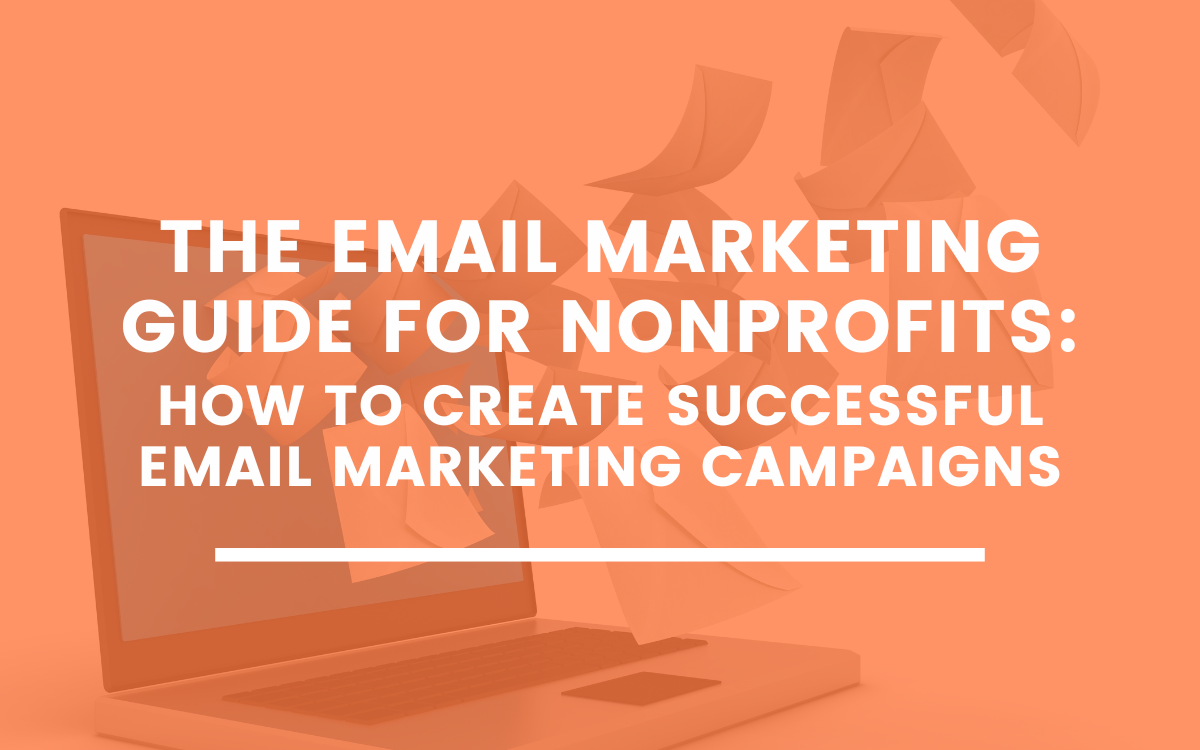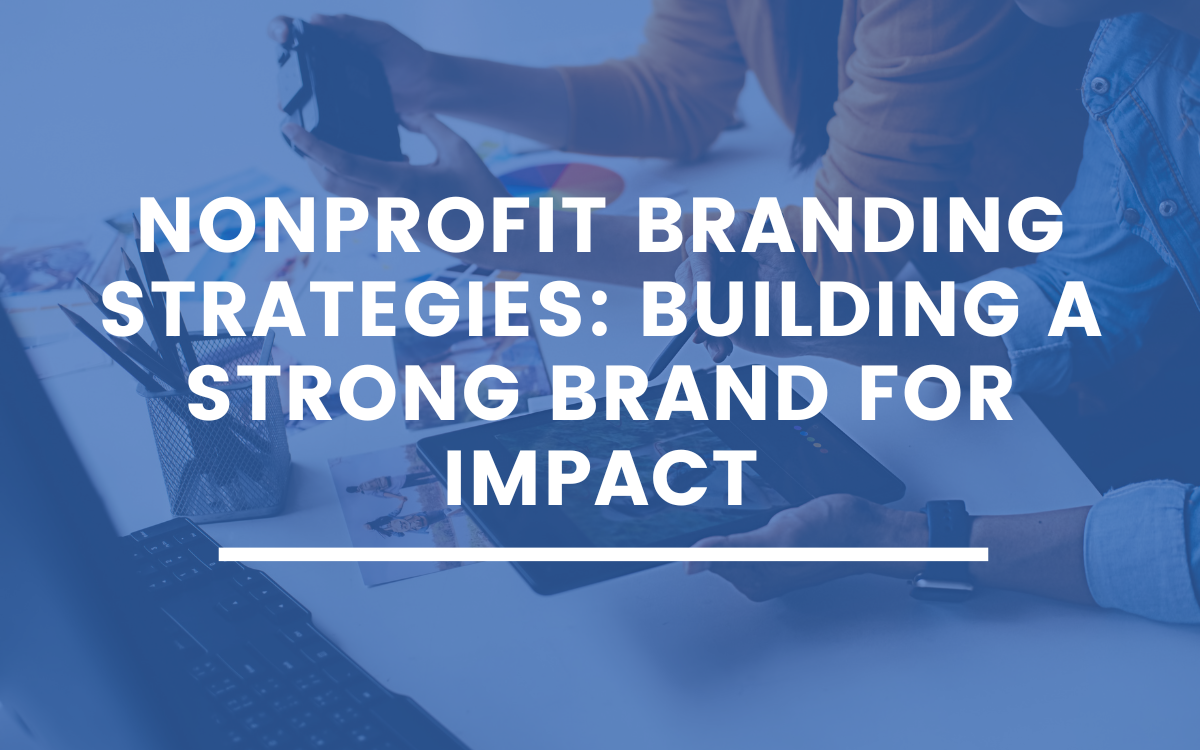How To Write The Best Fundraising Email
7 min to read ✭ In this blog, you will learn how to create the best fundraising email possible for your nonprofit.
Don’t doubt the capacity of your email list to capture donors in a fundraising email campaign.
M+R Benchmarks reported that nonprofit email lists increased at an average rate of 7 percent in 2021. For every 1,000 fundraising emails sent, an organization can raise an average of $45, according to that same report.
Of 439 nonprofits surveyed by Community Boost, 74 percent said that email was “very important” in their 2022 digital fundraising strategies.
Why You Should Be Using Email Marketing For Your Fundraising
According to nonprofits surveyed by Community Boost, fundraising emails offer the most significant Return on Investment (ROI) of all digital marketing channels. An email list provides affordable outreach, automates time-saving measures, and directly speaks to donors. A fundraising email also builds brand awareness and trust with your donors. Campaign Monitor reported that the nonprofit industry has the highest email open rate at 20.39 percent.
The Tenement Museum is an example of a low-cost, high-performance fundraising email campaign. The museum’s mission is to “foster a society that embraces and values the role of immigration in the American identity.” The overarching goal was to build awareness with a digital campaign so the museum could stay open to tell unique stories about the American experience for immigrants, migrants, and refugees.
A 24-hr well-focused Facebook fundraiser and accompanying fundraising email campaign garnered $50,000+ in donations with $0 in ad spending — $40,000 came from email solicitations alone.
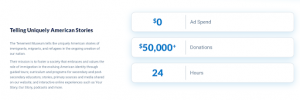
Want To See Results Like This? Talk With Our Email Specialists
7 essential elements needed in a fundraising email
Here are some of the most essential elements needed in a fundraising email to cause a significant impact, like the fundraiser The Tenement Museum conducted.
Element 1: Proper Formatting
Ensure your format is mobile-friendly. Smartphones, tablets, etc., accounted for 54 percent of nonprofit website traffic in 2021, according to M+R Benchmarks.
Surveys show that an email read on a mobile device and then read a second time on a desktop has a 65 percent higher likelihood of getting clicked.
Website and email analytics will offer insights on how users accessed your organization’s information.
Element 2: Know Your Audience
Make the reader feel like that fundraising email was created for them alone. Segmentation and targeting pinpoint precisely what you want to say to an audience. Audiences are more likely to engage with content relevant to them. It also keeps specific audiences from receiving too many messages. Some audience segmentation options include:
- Age
- Gift size
- Donation frequency
- Last donation date
Tools like A/B testing will ensure you get the best message to the audience.
Element 3: Subject Line
Third, craft a robust and active subject line. Almost half of email recipients open an email based on the subject line. Personalized subject lines get a 26 percent boost in open rates.
Nonprofits can have fun by including emojis, which reportedly increased open rates by 56 percent compared to text-only subject lines. Here are some additional tips to keep in mind:
- Brevity creates a mystery: Keep subject lines under 16 characters.
- Use active verbs: Create a sense of urgency or importance
- Avoid spam words: Words like “Free” and “Promise” will get your fundraising email kicked to the junk or spam folder.
- Be accurate: Say exactly what you mean. Don’t bait and switch a reader.
- Pose questions, but don’t use questions where the answer could be “No.” A “no” doesn’t encourage the reader to take action.
- Avoid using “we.” “We” doesn’t create an image, but “I” implies that a person wants to talk to “you” and “me.”
- Use traditional literary techniques, and then break the rules: Use rhymes, alliterations, music lyrics, movie quotes, and more. Once you understand basic sentence structure, you can break the rules in ways that catch the reader off guard and create intrigue.
- Create FOMO (Fear of Missing Out).
- Personalize the subject line with the contact’s first name
- Have the email sent from an actual email that can receive replies. Emails that link to a real human perform better than ones that use an unmonitored mailbox.
- Stay on brand: Follow voice and tone guidelines in your organization’s brand kit.
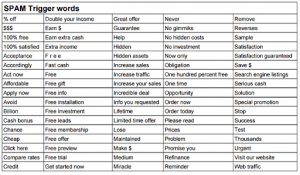
Element 4: Decide how to structure your email
Hook your reader with concise messaging. Remember, though, even if they don’t take action and donate, you are still building brand awareness and donor trust.
Nonprofits have many amazing stories but keep messages to a singular topic and don’t provide links that pull them away from the fundraising email CTA. Other tips include:
- Make use of your preview snippet. After the subject line, this is the next thing they’ll probably read.
- Use active verbs and vivid nouns in headers and subheads.
- Limit messages to two or three paragraphs.
- Keep paragraphs fewer than three sentences.
- Be consistent with a style based on the brand kit. This covers
- Typeface
- Brand colors
- Brand logo
- Include plenty of white space
- Review the format on all device options.
- Optimize the organization’s contact information
- Include links that are clear and easy to click, especially on mobile devices. Your CTA should be above the fold, which is what the reader can see before they scroll.
Element 5: Visuals
Your images need to pop and grab attention. Research shows that 90 percent of the information processed by the brain is visual and that the brain processes imagery 60,000 times faster than text. Make your visuals stand out:
- Choose the correct formatting of the visual for the email.
- Optimize visuals for mobile devices. If it’s pixelated or an infographic with too small text, that image isn’t processed correctly.
- Choose images that tell a story.
- Choose images that are vivid and color-rich.
- Consider creating an infographic vs. a traditional photo.
- Do not use images without proper copyright permissions.
Learn more about creating compelling visuals for your organization here.
Element 6: Tell a story
You have moved your reader closer to donating online. But unfortunately, most people read fewer than 30 percent of the words on a page, and 55 percent of website visitors spend less than 15 seconds actively reading.
Here are ways you can make the most out of the few paragraphs of real estate in a fundraising email:
- Answer basic questions:
- How does this affect me? Why should I care? How will my donation make an impact?
- Like any good story, have a protagonist. It’s easier to relate to individuals than entire populations.
- Show their donation’s impact that keeps the mission thriving.
- Appeal to emotions: Keep using strong, active verbs, vivid nouns, and simple language. Paint pictures with your short story.
- Don’t use industry jargon, as that will slow down your story.
- Focus on ONE specific program or aspect of the organization. The main goal is to get them to the CTA.
- Provide a “final act” for the protagonists’ story that leads directly into the CTA. You’ve made them problem aware, so now you need them to get solution-focused.
Element 7: Call To Action
Last, get the reader to click your CTA. Now you need to complete the reader’s journey by taking action and making a donation.
Here’s how to craft a compelling CTA:
- Be clear on what you’re asking of donors.
- Be clear on the following action they need to take in case decision fatigue has set in.
- Continue using bold, active verbs.
- Offer a solution to the problem posed in your fundraising email.
- Create a sense of urgency.
Here are 15 examples of great Calls to Action.
What To Do After You’ve Crafted Your Fundraising Email
Fundraising emails are not one and done. Following up on the initial ask email determines how to build the momentum your organization has created.
Track and Analyze your email’s performance
Metrics to look for:
- Open Rate
- Click-Thru-Rate (CTR)
- Bounce Rate
- Conversion Rate
- List Growth Rate
- Unsubscribe Rate
- Spam Rate
- Engagement Over Time
- Mobile Usage Rates
- Return On Investment (ROI)
- Revenue Per Email
- Domain Click Rate
How iOS15 will affect metrics:
Apple released iOS15 in September 2021, which made three main privacy changes that affect email marketing:
- Mail Privacy Protection (Free): Apple Mail will offer users to toggle off/on privacy protection which will mask their IP addresses, blocking third parties from tracking email opens or other IP data.
- ICloud+: This is an iCloud subscription that offers additional privacy features preventing sites from tracking Safari users that have opted into this subscription. Additionally, this allows users to see which sites are collecting their information.
- Hide my email: This feature allows site visitors and customers to give a “fake” email address that they can change at any time. These fake addresses will send your email to an actual address, just not to that specific visitor. The issue here lies in that you will not be able to attain that person’s valid email address unless they share it with you.
Apple Mail and Apple mobile devices contain more than 35 percent of the email provider market share globally. Yet, despite the changes, M+R Benchmarks reported that fundraising email open rates climbed by 17 percent in 2021.
Write a follow-up fundraising email
Automations keep the donor “warmed up” for future engagement. The post-ask engagement is essential. For-profit businesses gain 320 percent more revenue from automated emails than non-automated emails. Take their lead and save time and money.
Readers don’t want to feel used and not see any value from their interaction with your organization. So here are some post-ask emails to automate:
- Thank you email for donors. Make them feel valued.
- Value-add email that shows the use of donations.
- A follow-up email with non-monetary ways to get involved with the organization.
- A follow-up email to become a recurring donor.
- Follow-up email for those who opened the fundraising email but did not act. This can include another email encouraging them to take action. Don’t guilt-trip in this email.
- Follow-up newsletter to build brand awareness and trust with those who didn’t open the fundraising email.
Conclusion
Email marketing is effective. Ensure your fundraising email success by optimizing the day and time it is sent. According to Campaign Monitor, emails sent on Monday can reach a CTR of 20 percent, making it the best day to send a fundraising email. Among fundraising, advocacy, and newsletter emails sent in 2021, M+R Benchmark reported that fundraising open rates performed at 23 percent. Of those fundraising emails, the page completion rate was 16 percent.
Our Email Guide for Nonprofit Marketing will set your organization up for success when your next fundraising email campaign happens this year.



